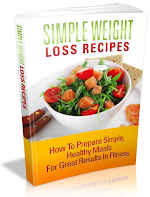"The Flexitarian Diet: A Mostly Vegetarian Approach to Weight Loss, Better Health, Disease Prevention, and Life Extension."
The term "flexitarian" is a combination of the words "flexible" and "vegetarian." Dawn Jackson Blatner. A registered dietitian, coined the term more than a decade ago in her 2009 book "The Flexitarian Diet. The Mostly Vegetarian Way to diet for weight loss, Be Healthier, Prevent Disease. And Add Years to Your Life."
According to Blatner, you don't have to completely eliminate meat from your diet to reap the health benefits of vegetarianism; you can be a vegetarian for the majority of the time. But indulge in a burger or steak when the mood strikes. People who follow the diet. Are said to not only lose weight. But also improve their overall health. Lowering their risk of heart disease, diabetes, and cancer. And living longer as a result of eating more plants and less meat.
Diet that is. Well-balanced.
These diets fall within accepted ranges for the amount of protein, carbs, fat, and other nutrients they provide.
Diet rankings from U.S. News and World Report.
According to the list of the Best Diets Overall. The Flexitarian Diet placed second. A panel of health experts evaluated 39 different diets.
What is the Flexitarian Diet and how does it work?
Rather than eliminating any food groups. Becoming a flexitarian entails adding five to your diet. The "new meat" (non-meat proteins such as beans, peas, or eggs). fruits and vegetables, whole grains, dairy. And seasonings are among them.
- Breakfast, lunch, dinner. And snack recipes are included in. A five-week meal plan. You can stick to the plan as is, or mix and match recipes from different weeks to suit your tastes.
- It's a calorie-controlled diet of three-fourths of a pound: Breakfast options are around 300 calories, lunches are 400 calories, and dinners are 500 calories. Snacks have about 150 calories each. So if you have two, your daily total will be 1,500 calories.
- You can adjust the plan to allow for slightly more or fewer calories depending on your activity level, gender, height, and weight.
- And go at your own pace with the flexitarian diet: Jump right in and try the majority of the recipes, adhering to the meal plan to the letter for the next five weeks. Alternatively, take it slowly and only try one or two of the recipes each week.
What am I allowed to. Eat?
- Breakfast hash with eggs and vegetables. Start your day off right with this savory meal to keep your energy levels high all afternoon.
- Oatmeal with pumpkin spice and hazelnuts. More flavor doesn't have to mean more time in the kitchen. It takes less than 10 minutes to make this delicious twist on traditional oatmeal.
- Soup made with lentils. Lentils are high in protein, making them an excellent choice for vegetarians looking to meet their daily protein requirements.
- berries and Greek yogurt. Antioxidant-rich blueberries or raspberries can help you fight the signs of aging. To add sweetness, sprinkle granola or drizzle honey on top.
- Quiche. Blend eggs with spinach and feta cheese, or add broccoli and ham to the mix. This flavorful dish is great for breakfast, lunch, or dinner.
What is the cost of The Flexitarian Diet?
Because of no exotic ingredients. Are required. Groceries should not be more expensive than usual. Bypassing the butcher, you can keep the bill down. The individualized nature of the diet allows you to save money by cooking dinner with whatever produce is on sale, for example. There is no membership fee, but you will need to purchase "The Flexitarian Diet," which costs $16.65.
Can you lose weight on the Flexitarian diet?
The flexitarian diet is likely to help you lose weight. According to a study published in 2020 by the Max Planck Institute for Human Cognitive and Brain Sciences, vegetarians consume fewer calories, weigh less, and have a lower BMI (a measure of body fat) than meat-eaters. If you focus on the plant-based portion of this diet. Such as eating plenty of fruits, vegetables, beans, lentils. And whole grains, you'll likely feel satisfied with fewer calories. Than you're used to.
You'll lose weight with that calorie deficit and a little physical activity.
Instead of being on a restrictive diet, weight loss occurs as a result of eating more plants. It's entirely up to you how quickly you remove them and whether or not you keep them off.
This research is. Still being expanded upon. Researchers looked at data from 25 semi-vegetarian diet studies published between 2000 and 2016. Nearly half of the studies looked at bodyweight, including epidemiological studies, randomized controlled trials, and clinical trials. Their findings. Which were published in 2017. Revealed that participants' BMI was highest when they ate a non-vegetarian diet, lowest when they ate a semi-vegetarian diet, and lowest when they ate a strictly vegetarian diet.
How simple is it to follow the Flexitarian Diet?
This is a simple regimen to follow. Blatner emphasizes that you don't have to stick to the diet to the letter – the goal is progress, not perfection. There are plenty of guidelines and even shopping lists in the book. These tools take a lot of the legwork and planning out of the process.
It's useful because of its adaptability. There are plenty of recipes to choose from, and meal preparation shouldn't take too long. It is possible to eat out. And alcohol is permitted. The diet emphasizes flexibility; you are not required to follow any rules 24 hours a day. Seven days a week.
The recipes are straightforward. The book "The Flexitarian Diet". Is jam-packed with them. They're made to make it simple for you to prepare. Healthy flexitarian meals. That you'll enjoy. Each recipe calls for only five main ingredients on average.
Eating out is both manageable and permissible. To find healthy meals, look at restaurant menus ahead of time; most menus are now available on the restaurant's website or elsewhere online. Use words like broiled, baked, grilled, roasted, poached, and steamed instead of fried, crispy, breaded, creamy, scalloped, or sauteed.
The diet includes time-savers. Meal plans and grocery lists are provided in great detail.
You have access to additional information at your fingertips. Recipes (searchable by category), grocery lists, FAQs. And other diet-related information. Can be found on Blatner's website. There's a section called FlexLife Troubleshooters in the book that's chock-full of advice. Answers to frequently asked questions about flexitarianism, dieting. And weight loss can be found here. As well as strategies for making healthy changes quickly and efficiently. Tips for taming cravings, and how to overcome common diet roadblocks like parties and travel.
It shouldn't be a problem if you're feeling full. Satiety, or the satisfying feeling that you've had enough. Is emphasized by nutrition experts. You shouldn't be hungry between meals if you've built a healthy vegetarian diet around fiber-rich vegetables, fruits, beans, lentils, and whole grains.
The flavor changes on a daily basis. From "lunch nachos" to a grilled cheese and rosemary-tomato sandwich, Caribbean black bean couscous, and veggie enchiladas, there's something for everyone. Try a peach-raspberry crepe for dessert, or pineapple with candied ginger and pecans.
On the Flexitarian Diet, how much exercise should you get?
On this diet. Exercise is highly recommended. Ideally, you should get 30 minutes of moderate exercise five days a week, or 20 minutes of intense exercise three times a week, with at least two days of strength training. But, as Blatner points out, "anything is better than nothing." She explains how to view the world as your gym, stay motivated, and overcome exercise barriers in "The Flexitarian Diet."
You may also like:
________________________________________________
Ancient Japanese Discovery Melts 54 LBS Of Fat
The Custom Keto Diet | Your Personal Keto Custom Plan
Nature's Secret for Healthy Blood Sugar. Weight Loss
The Delicious Smoothie Diet: 21 Day Rapid Weight Loss Program
Powerful New Formula To Support Healthy Weight Loss



















0 Comments